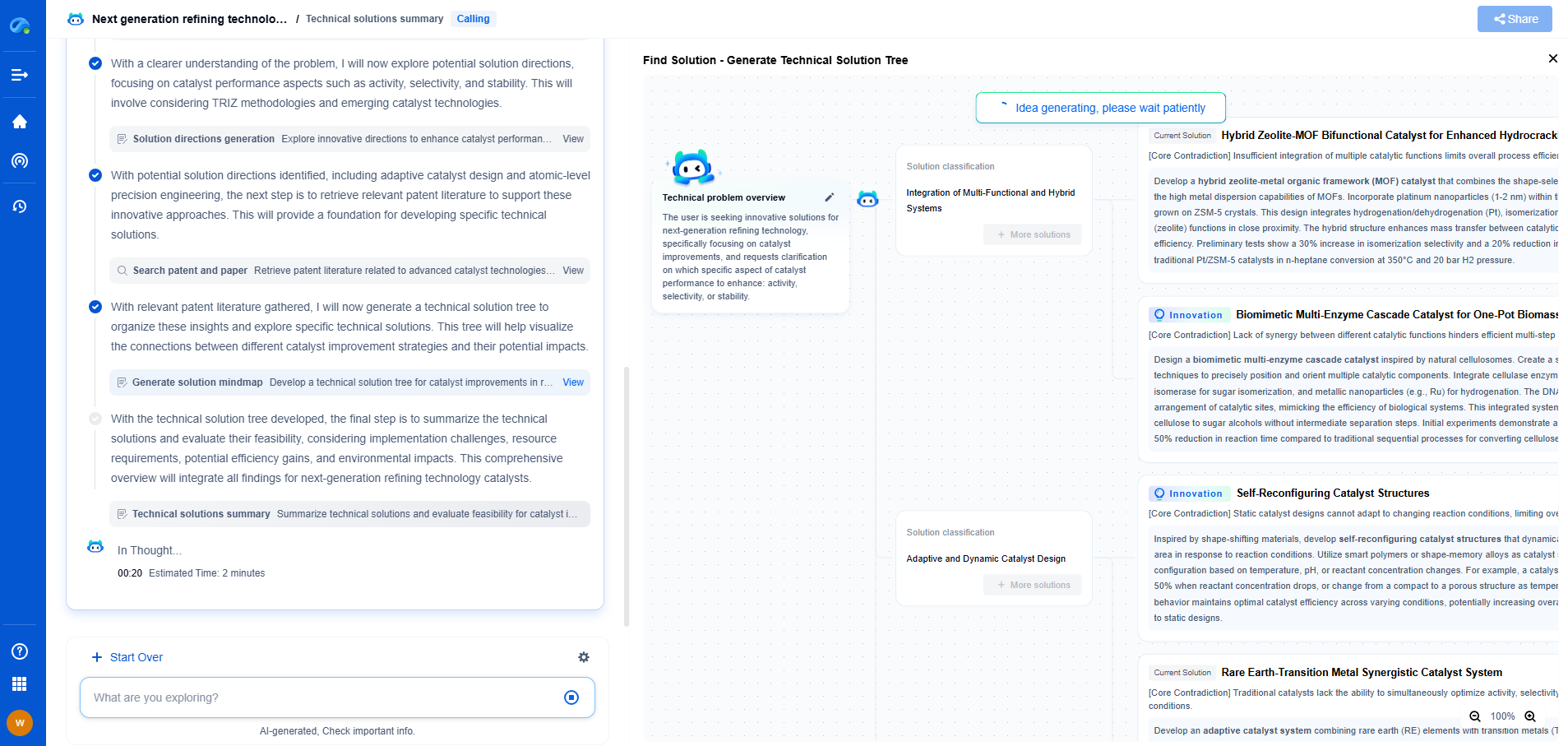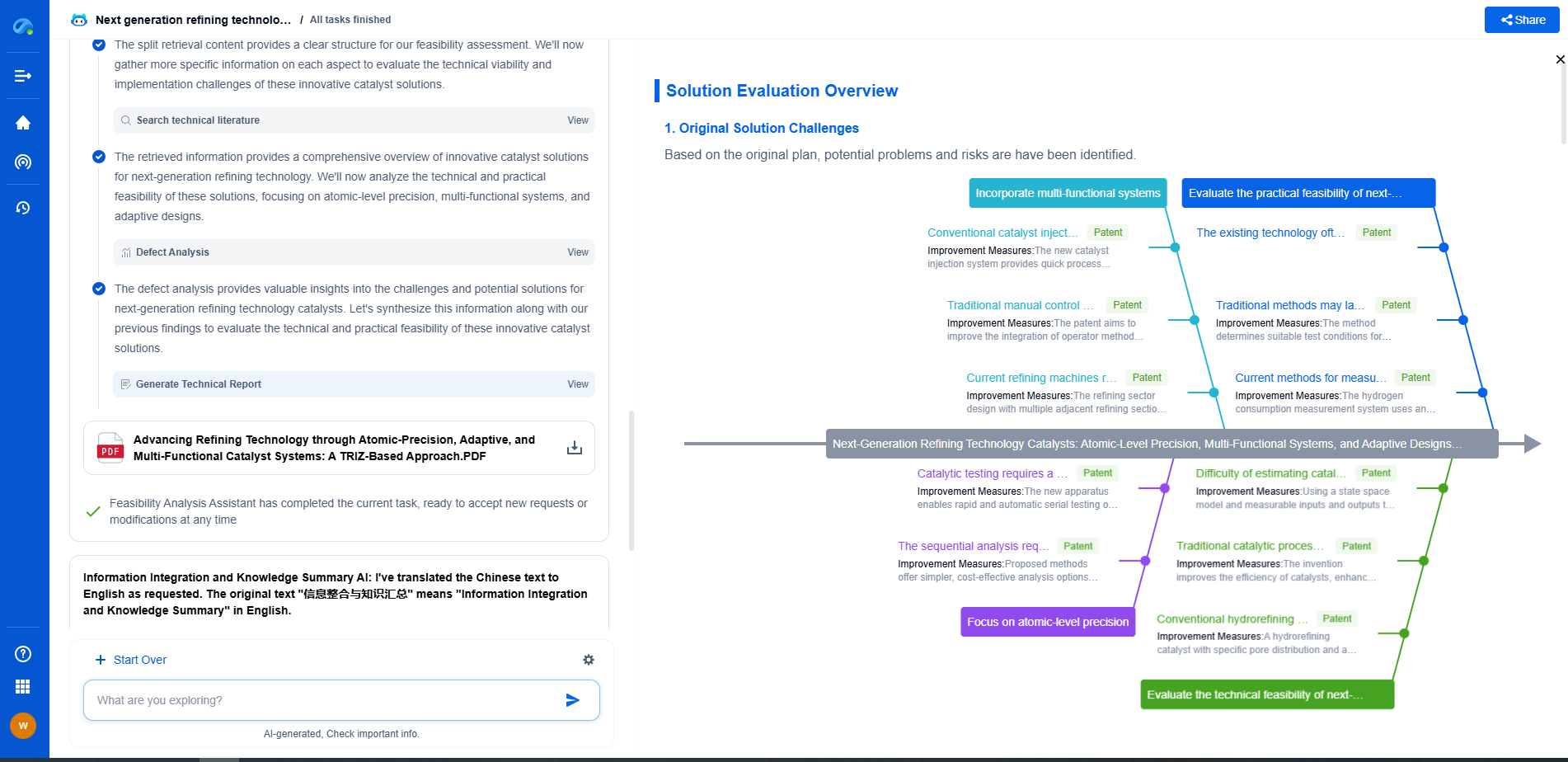What is PROFINET vs. EtherCAT? Comparing Industrial Fieldbus Technologies
JUL 2, 2025 |
In the world of industrial automation, fieldbus technologies play a vital role in ensuring smooth communication between various components of a system. These technologies facilitate the transfer of data between sensors, actuators, and controllers in an efficient manner, enabling industries to optimize their processes. Among the many fieldbus protocols available, PROFINET and EtherCAT have emerged as two popular choices. While both serve the purpose of industrial communication, they have distinct characteristics and advantages that make them suitable for different applications. In this article, we'll explore the key differences and similarities between PROFINET and EtherCAT, providing insights into their functionalities and appropriate use cases.
Understanding PROFINET
PROFINET, short for Process Field Network, is an industrial Ethernet standard developed by Siemens and the PROFIBUS and PROFINET International (PI) organization. It is widely used in manufacturing and process industries due to its versatility and reliability. PROFINET is based on Ethernet technology, allowing it to offer high-speed communication and seamless integration with existing IT infrastructure.
One of PROFINET's major strengths is its flexibility. It supports both real-time (RT) and isochronous real-time (IRT) communication, catering to a wide range of industrial applications. RT is suitable for general automation tasks, offering cycle times in the millisecond range, while IRT is designed for applications requiring precise synchronization, such as motion control, with cycle times as low as a few hundred microseconds.
PROFINET also boasts robust diagnostic capabilities, enabling users to easily detect and troubleshoot network issues. Its modular architecture allows for easy scalability, making it an excellent choice for both small-scale and large-scale automation projects. Additionally, its compatibility with various communication standards ensures seamless integration with devices from different manufacturers.
Exploring EtherCAT
EtherCAT, which stands for Ethernet for Control Automation Technology, is an open-source, high-performance fieldbus protocol developed by Beckhoff Automation. Known for its exceptional speed and efficiency, EtherCAT is often the preferred choice for applications requiring extremely fast and deterministic communication.
The primary advantage of EtherCAT is its unique communication mechanism. Unlike traditional Ethernet communication, where each device processes data individually, EtherCAT employs a "processing on the fly" approach. Data packets are processed as they pass through each device, allowing for ultra-fast data exchange with minimal latency. This makes EtherCAT particularly suitable for applications like robotics, CNC machines, and high-speed motion control, where real-time performance is critical.
EtherCAT also supports a wide range of I/O devices and provides exceptional synchronization capabilities, ensuring precise coordination of multiple devices in complex automation systems. Its master-slave architecture simplifies network configuration and management, while its redundancy features enhance system reliability.
Key Differences Between PROFINET and EtherCAT
While both PROFINET and EtherCAT are designed to facilitate industrial communication, they differ in several key aspects:
1. Communication Speed and Determinism:
PROFINET offers real-time communication suitable for most automation tasks, while EtherCAT excels in high-speed and deterministic applications due to its "processing on the fly" approach.
2. Flexibility and Scalability:
PROFINET's modular architecture and support for various communication standards make it highly flexible and scalable. EtherCAT's open-source nature allows for easy integration but may require more specialized knowledge for configuration.
3. Industry Applications:
PROFINET is widely adopted in manufacturing, process industries, and general automation. EtherCAT is favored in applications demanding high-speed, real-time performance, such as robotics and motion control.
4. Diagnostic and Redundancy Features:
Both technologies offer robust diagnostic tools, but EtherCAT's redundancy features and simple master-slave configuration enhance its reliability in complex systems.
Choosing the Right Technology for Your Application
Selecting between PROFINET and EtherCAT ultimately depends on the specific requirements of your application. If your primary concern is high-speed, deterministic communication, EtherCAT may be the better choice. Its efficient data processing and exceptional synchronization make it ideal for high-performance applications.
On the other hand, if flexibility, scalability, and compatibility with existing infrastructure are your priorities, PROFINET might be more suitable. Its ability to support a wide range of communication standards and its comprehensive diagnostic capabilities can greatly benefit general automation and process industries.
In conclusion, both PROFINET and EtherCAT offer unique advantages tailored to different industrial needs. Understanding these technologies' strengths and limitations will help you make an informed decision, ensuring optimal performance and efficiency in your automation projects.
Ready to Reinvent How You Work on Control Systems?
Designing, analyzing, and optimizing control systems involves complex decision-making, from selecting the right sensor configurations to ensuring robust fault tolerance and interoperability. If you’re spending countless hours digging through documentation, standards, patents, or simulation results — it's time for a smarter way to work.
Patsnap Eureka is your intelligent AI Agent, purpose-built for R&D and IP professionals in high-tech industries. Whether you're developing next-gen motion controllers, debugging signal integrity issues, or navigating complex regulatory and patent landscapes in industrial automation, Eureka helps you cut through technical noise and surface the insights that matter—faster.
👉 Experience Patsnap Eureka today — Power up your Control Systems innovation with AI intelligence built for engineers and IP minds.
- R&D
- Intellectual Property
- Life Sciences
- Materials
- Tech Scout
- Unparalleled Data Quality
- Higher Quality Content
- 60% Fewer Hallucinations
Browse by: Latest US Patents, China's latest patents, Technical Efficacy Thesaurus, Application Domain, Technology Topic, Popular Technical Reports.
© 2025 PatSnap. All rights reserved.Legal|Privacy policy|Modern Slavery Act Transparency Statement|Sitemap|About US| Contact US: help@patsnap.com

